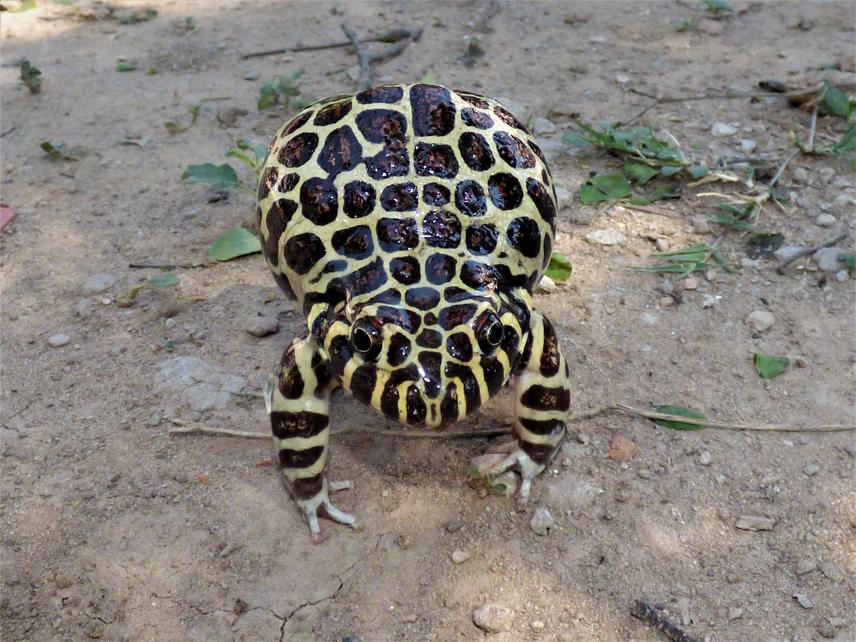Isis Agostina Danae Ibanez
Leptodactylus laticeps, also known as Santa Fe Frog or Kururu Pytã (Guaraní language), is an endemic amphibian from the South American Great Chaco, extending to Argentina, Bolivia, and Paraguay. The global conservation status is Near Threatened with declining population trends, while the national assessment assigned the status of Vulnerable in Argentina. The threats faced by the species are related to the socio-cultural matrix composed of various coexisting ethnicities The main threat is habitat loss linked to the transformation undergone in the forests, primarily driven by the expansion of the agricultural frontier. Other proposed threats to the species are over-harvesting for international pet trade and harassment based on aversion feelings.

Santa Fe Frog. ©Julián Lescano
Despite being an iconic species and facing several threats, the species' current distribution and population status are unknown, and the lack of studies providing information about basic natural history traits and threats has hindered the development of effective conservation actions.
We propose to create a grassroots movement in the Argentinean Great Chaco to gather efforts from biologists, educators, farmers, conservationists, and indigenous leaders to perform community-based conservation solutions for recovering L. laticeps populations.
We will be working on:
1. Acquire a deeper understanding of over-harvesting conflicts in Argentina.
2. Perform public engagement campaigns to change people's attitudes towards L. laticeps and increase conservation support within "criollo" and indigenous communities.
3. Engage people from the local community (i.e., young volunteers, schoolteachers and park rangers) in the project.
4. Identify the remnant population of L. laticeps in Argentina and determine the current distribution through extensive fieldwork. Spatial ecological analysis will be performed to assess the severity and extent of habitat loss as a threat to the species.
5. Compile the obtained information to develop a preliminary action plan aimed at conserving L. laticeps in Argentina, focusing on mitigating anthropogenic effects on remnant populations.
6. Establish the first conservation project focused on an amphibian species in the South American Great Chaco region.
Header: Santa Fe frog. ©Isis Ibañez.